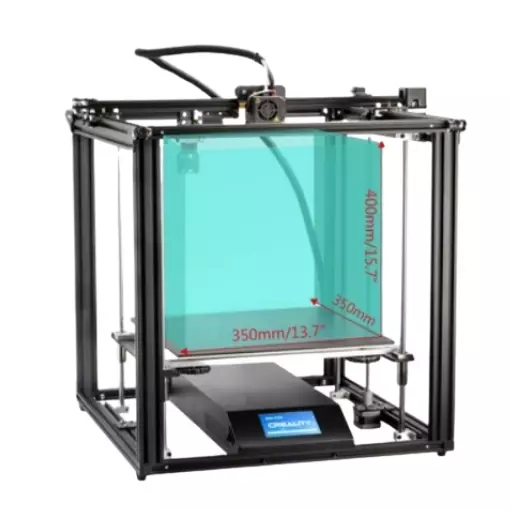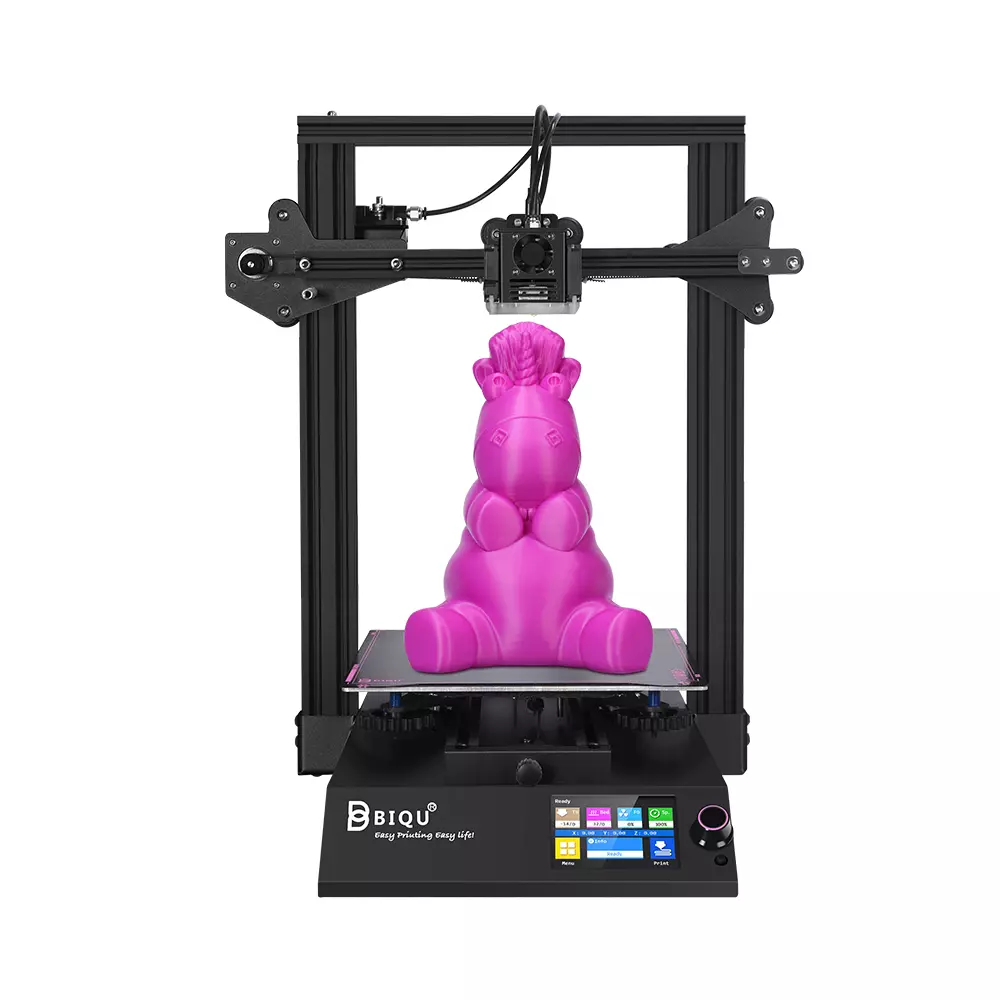Compare Ender 5 Plus vs BIQU B1
Comparison between the best 3D printers
Choose the best 3D printer at the best price. The cheapest 3D printers are here.
Buy a 3D printer here with 3D Fila.
 |
 |
|
| Model | Ender 5 Plus[BUY Ender 5 Plus] |
BIQU B1 |
| Printing Material | Filament | Filament |
| Buy Filament for Creality 3D Ender 5 Plus | Buy Filament forBigTreeTech BIQU B1 | |
| Estimated price | $599,00 | $269,00 |
| Manufacturer | Creality 3D | BigTreeTech |
| Release Year | 2019 | 2020 |
| Print Volume [mm] | 350x350x400 | 235x235x270 |
| Printer Size [mm] | 632x619x666 | 412x402x492 |
| Weight [kg] | 18,2 | 8,00 |
| Power Loss Recovery | YES | YES |
| Enclosed printer | NO | NO |
| Bed Leveling | Automatic | Manual |
| Filament End Sensor | YES | YES |
| Bed type | Heated | Heated |
| Power supply system | Bowden | Bowden |
| Standard nozzle | 0,4 | 0,4 |
| Maximum Nozzle Temperature [°C] | 260 | 250 |
| Maximum Bed Temperature [°C] | 100 | 100 |
| Maximum printing speed [mm/s] | 180 | 100 |
| Filament holder | YES | YES |
| Camera for supervision | NO | NO |
| Recommended filaments | PLA, TPU, ABS, PETG | PLA, TPU, ABS, PETG |
| Recommended slicers | Cura, Simplify, Slic3r | Cura, Simplify, Slic3r |
| Maximum Resolution [mm] | 0,1 | 0,1 |
| Processor | 32 bits | 32 Bits BTT SKR V 1.4 |
| Display | Touchscreen TFT 4,3'' | Touchscreen TFT 3,5'' |
| Power Supply | 24V / 504W | 24V / 360W |
| Connectivity | SD / USB | SD / USB |
| Operating systems | Windows, Mac, Linux | Windows, Mac, Linux |
| Date of registration in the system | 2021-04-14 | 2021-04-14 |
| Release date | 2019 | 2020 |
| Extra features | The Ender 5 Plus offers a large print volume (350x350x400 mm) and fast assembly. It includes a BLTouch sensor, but with range limitations. It stands out for its dimensional accuracy, although it requires adjustments to the slicer settings. Despite the noise, its integrated design saves space, and includes features such as a filament sensor and power resumption. Ideal for large projects, it requires refinement in the settings for high-quality prints. | The BIQU B1 is an advanced 3D printer with a silent 32-bit BTT SKR V1.4 motherboard and ARM Cortex-M3 CPU, offering DIY interfaces (I2C, SPI, WiFi) and dual Z-axis. Its dual BTT B1 TFT35 V3.0 operating system allows real-time monitoring and multiple printing modes, including G-code visualization effects. It stands out for its BIQU SSS (Super Spring Steel), ensuring easy model adhesion and simplified removal, with the possibility of using it on both sides. It includes a filament sensor, automatically pausing printing in case of filament breakage. The multicolored RGB lights integrated into the hotend allow you to view the printing status even at night. Additional notes include the need for a BIQU-specific Type-C cable and extra interfaces for smart filament sensor and BL Touch. |
| Support for multiple colors and materials (AMS and CFS) | NO | NO |
Notes * |
||
| Cost-benefit | 6 / 10 | 7 / 10 |
| Hardware | 2 / 10 | 2 / 10 |
| Tela | . | . |
| Print volume | 4 / 10 | 3 / 10 |
| Performance | 1 / 10 | 1 / 10 |
| [BUY Ender 5 Plus] |
Conclusion |
| In comparing the Ender 5 Plus and the BIQU B1 3D printers, several key aspects highlight their strengths and weaknesses, guiding potential buyers in their decision-making process. The Ender 5 Plus, while significantly more expensive, boasts a larger print volume, allowing for the creation of bigger projects. It features an automatic bed leveling system, a filament end sensor, and a high maximum printing speed, making it a capable option for users needing precision and efficiency. However, it does require some slicer adjustments for optimal print quality, and potential noise can be a drawback in shared spaces. On the other hand, the BIQU B1 is a more budget-friendly option that still delivers essential features like a manual leveling system, a filament sensor, and versatile compatibility with different filaments. Its design is geared toward user-friendly operation, with added functionality such as a dual Z-axis setup and customizable interfaces for enhanced monitoring. While its maximum print speed is lower than the Ender 5 Plus, the BIQU B1 excels in cost-effectiveness, particularly for hobbyists or those new to 3D printing. Ultimately, the choice between the two printers should align with the user's specific needs and budget. If affordability and a straightforward experience are paramount, the BIQU B1 is a compelling choice. Conversely, for those requiring a larger build area and faster printing capabilities, the Ender 5 Plus offers a more robust solution despite its higher price point. Each printer has its merits, making it essential to weigh these factors based on individual preferences and project requirements. |

